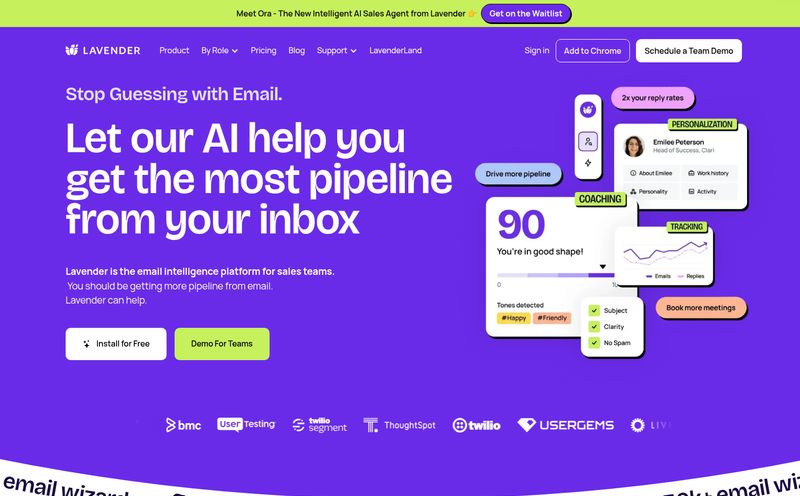Building a sales funnel can be a soul-crushing experience. I've been in the SEO and traffic game for years, and I’ve wrestled with more funnel builders, page editors, and checkout plugins than I care to admit. You spend weeks stitching together different tools, praying the integrations don't break, and by the time you're done, your brilliant idea feels... stale. And expensive.
So when a tool like Plug&Pay comes along, waving a big shiny banner that says you can “Launch a profitable website in just 5 minutes,” my inner skeptic raises a very prominent eyebrow. Five minutes? Really? But my inner, overworked entrepreneur leans in, intrigued. Could this actually be the easy button we've all been looking for?
I decided to pop the hood and take a proper look. Is it all marketing hype, or is there some serious horsepower here? Let's get into it.
So, What Exactly is Plug&Pay?
First off, don't mistake this for just another website builder like Wix or Squarespace. That's not really what it's about. Plug&Pay is a dedicated sales funnel and checkout software. It’s designed from the ground up to do one thing exceptionally well: convert visitors into customers and maximize how much they spend.
Think of it less like a box of LEGOs to build a whole city and more like a high-octane cash register that’s directly wired into a powerful marketing machine. It’s for people selling digital programs, coaching, physical products, event tickets, or subscriptions who just want to get to the selling part, fast. The platform boasts that it helps you create everything from landing pages to the final checkout, all automated and optimized for sales. A bold claim.

Visit Plug&Pay
The Features That Actually Matter
A feature list is just a list. What I care about is how those features translate into more money in your pocket or more time back in your day. Here's what stood out to me.
The AI Assistant is Your New (Slightly Robotic) Best Friend
Okay, the AI thing is everywhere right now, but Plug&Pay’s implementation is genuinely useful. It’s not just about generating a block of text. The AI can help structure your entire website, write your sales copy, and create landing pages. I’m always a bit wary of AI-generated sales copy—it can sometimes sound like a friendly but deeply confused robot. But for getting a solid first draft? Or for overcoming that dreaded blank page syndrome? It’s a massive timesaver. You can go from zero to a fully written sales page in minutes, then just spend your time tweaking and adding your own voice. That’s a win.
Building Funnels That Actually Convert
This is the core of the platform. The real meat and potatoes. Plug&Pay makes it almost laughably easy to add the stuff that professional marketers use to squeeze every last dollar out of their traffic. I'm talking about:
- Order Bumps: That little checkbox at checkout, “Want to add our premium checklist for just €7?” It's a simple, high-converting way to increase your average order value.
- One-Click Upsells: After the initial purchase, you can immediately offer a customer a related, higher-ticket item. Since their payment info is already in, they just have to click once. It feels like magic. I can't tell you how many times I've fallen for this myself. You buy a book, and suddenly you're being offered the entire audiobook bundle for a discount. It just works.
- A/B Testing: The ability to test different headlines, prices, or offers against each other is not a 'nice to have'; it’s how you go from a guessing game to a predictable revenue stream. This is locked into their Premium plan, but it's a big reason to upgrade.
Managing Subscriptions and Getting Paid
If you're building a recurring revenue business (and you probably should be), the subscription management tool is solid. It handles recurring payments, installments, all that jazz. Here's teh thing though: Plug&Pay isn’t a payment processor itself. You must have a Stripe or Mollie account. This isn't really a 'con' in my book; it’s just how these things work. It “plugs” into the most trusted payment gateways, which is frankly what you want. It means security and reliability are handled by the big guys, while Plug&Pay focuses on the sales experience.
Let's Talk About the Money: Plug&Pay Pricing
Alright, so how much does this magic sales machine cost? The pricing structure is pretty straightforward, which I appreciate. No hidden fees or confusing credit systems. They offer a 14-day free trial, so you can poke around before committing.
| Plan | Price | Key Features |
|---|---|---|
| Lite | €15 /mo | Up to 3 products & 10 pages, AI tools, order bumps, basic stats. No custom domain. |
| Premium | €59 /mo | Unlimited products & pages, custom domain, one-click upsells, subscriptions, A/B testing, cart abandonment. |
| Ultimate | €119 /mo | All Premium features, plus a full affiliate system and customer portal. |
My take? The Lite plan is fine for testing an idea or for a very simple side project. But the lack of a custom domain is a dealbreaker for any serious business. It just screams 'amateur'. The Premium plan is the real sweet spot. For €59 a month, you get the tools that actually move the needle: your own domain, A/B testing, and crucially, one-click upsells and cart abandonment tracking. That's the stuff that pays for the subscription and then some. The Ultimate plan is for when you're ready to scale and build an army of affiliates to sell for you. A great goal to have.
The Good, The Bad, and The Just-Okay
No tool is perfect. So here's my brutally honest breakdown.
What's great is the speed and simplicity. The promise of launching fast isn't an exaggeration. You can genuinely get a professional-looking, high-converting checkout page live in an afternoon, not a week. The templates are clean, and the focus on revenue-boosting features like upsells is baked right in, not an afterthought you have to bolt on with another expensive app.
On the flip side, you are trading some control for that speed. If you're a designer or developer who wants to tweak every pixel and write custom code for everything, this might feel a bit restrictive. Also, the fact that key features like A/B testing and subscriptions are on the Premium plan might irk some people. But that’s the SaaS model, isn't it? They give you a great reason to upgrade, and honestly, the features are worth the jump.
Who is Plug&Pay Actually For? (And Who Should Skip It?)
Here's the bottom line.
Plug&Pay is a fantastic choice for:
- Coaches and Course Creators: You want to sell your programs and knowledge, not become a web developer. This gets you to market, fast.
- Solopreneurs and Small Teams: You value speed and efficiency over endless customization. You wear a lot of hats, and "funnel builder" doesn't need to be one of them.
- Anyone launching a new product: It's perfect for validating an idea quickly without investing thousands in a custom-built site.
You might want to look elsewhere if:
- You're a large, established e-commerce brand: You likely have a platform like Shopify or Magento with a deeply integrated, custom setup already.
- You need an all-in-one solution: Plug&Pay is focused on the sale. It's not a full CRM or email marketing platform. You'll need to integrate it with other tools for that (which it does well). If you want everything under one roof, you might look at something like Kartra.
- You're on an extremely tight budget: While the Lite plan is cheap, the real power is in the Premium plan. If €59/mo is a non-starter, you might have to stick with patching together free WordPress plugins for a while. Good luck with that.
So, What's the Final Verdict?
After digging in, I'm genuinely impressed. Plug&Pay knows exactly who it's for. It doesn't try to be everything to everyone. It’s a specialized tool for entrepreneurs who want to automate their sales and start making money without the technical headaches. It’s like they handed you the keys to a pre-tuned race car instead of a box of engine parts and a manual.
Is it a magic bullet that guarantees a profitable business? Of course not. You still need a good product and a way to get traffic. But it removes one of the biggest, most frustrating hurdles in the process. It gives you a professional, high-converting sales system right out of the box. And in this market, speed and efficiency aren't just nice—they're a competitive advantage.
Frequently Asked Questions (FAQ)
- 1. Can I use my own domain name with Plug&Pay?
- Yes, but you'll need the Premium plan or higher. The Lite plan operates on a Plug&Pay subdomain.
- 2. Do I still need a Stripe or Mollie account?
- Yes, absolutely. Plug&Pay is a checkout and funnel system, not a payment processor. It integrates securely with Stripe and Mollie to handle the actual transactions.
- 3. Is Plug&Pay a full website replacement?
- It can be, for a simple site focused on sales. You can build multiple pages. However, if you need a complex blog or a massive corporate site, you might use Plug&Pay for your sales pages and checkouts while keeping your main content on a platform like WordPress.
- 4. How good is the AI-generated sales copy really?
- It's a fantastic starting point. It's better than 90% of the 'first draft' copy I see from non-writers. You'll still want to edit it to match your unique brand voice, but it saves hours of work.
- 5. Can I sell physical products with this?
- Yes, you can. While it shines for digital products and subscriptions, it's fully capable of handling checkouts for physical goods as well.
Reference and Sources
- Plug&Pay Official Website
- Plug&Pay Pricing Page
- Stripe Payment Gateway
- Mollie Payment Gateway
- Kartra All-in-One Platform



